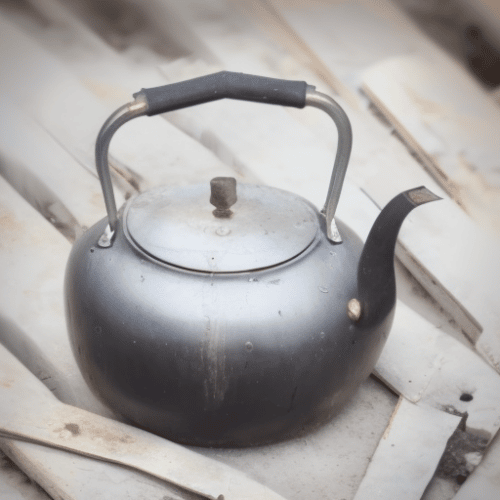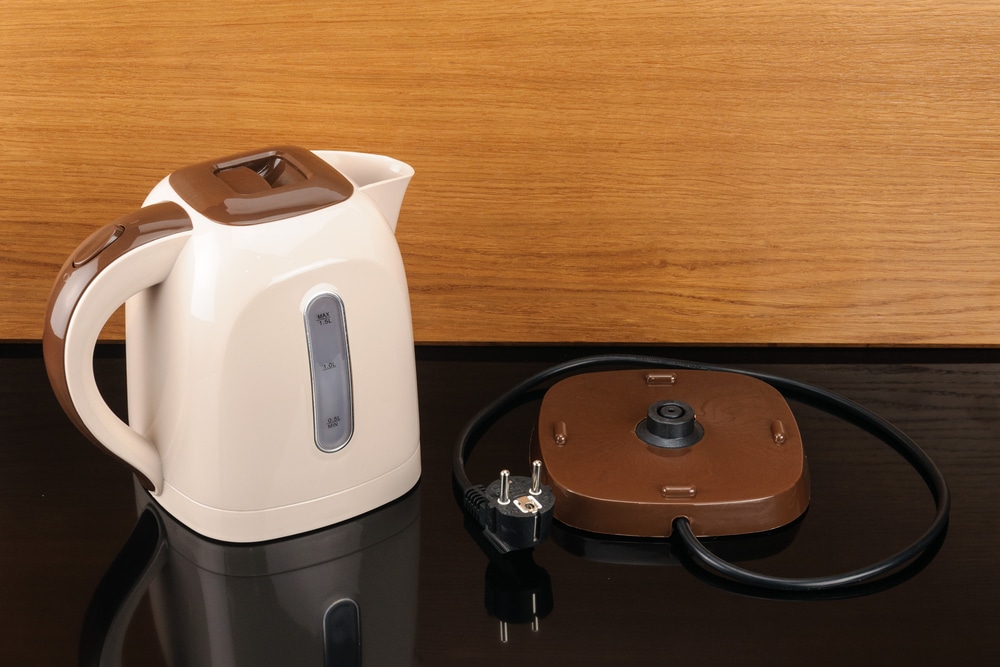Last Updated on
Looking for efficient ways on how to dispose of a kettle safely in the UK? It can be tricky knowing what to do with electrical products that have reached the end of their life, but don’t worry – we’ve got your back. In this blog post, we’ll explain exactly how to get rid of an old kettle without having any negative impacts on our environment. From checking local recycling guidelines and disassembling components for safe disposal or recycling, by following these steps you’ll know just where to start when it comes time to dispose of a kettle. So let’s dive right into it and learn all about getting rid of those obsolete kettles.
Table of Contents:
- Check Local Recycling Guidelines
- Disassemble the Kettle
- Separate Components
- Recycle Where Possible
- Safely Dispose of Non-Recyclable Parts
- Conclusion
Check Local Recycling Guidelines
When it comes to disposing of an old kettle, the first step should always be to check local recycling guidelines. It’s important to know what can and cannot be recycled in your area so that you don’t accidentally put something into a landfill that could have been reused or recycled.
For example, some areas may allow for kettles with plastic components to be recycled while others do not. Knowing this information ahead of time will help ensure that you are doing your part in helping reduce waste and protect the environment.
By following your local recycling guidelines, you can ensure that all parts of the kettle are disposed of responsibly and safely – now let’s move on to disassembling it.
Disassemble the Kettle
Before you start disassembling your kettle, make sure it is unplugged from the power source. It’s also a good idea to wear protective gloves and safety glasses when taking apart any electrical appliance.

Start by removing any detachable parts such as the lid or spout filter. If there are any screws holding these components in place, use a screwdriver to remove them carefully. Once all of the removable parts have been taken off, set them aside for later cleaning and inspection.
Next, take out the heating element inside the kettle body using an adjustable wrench or pliers if necessary. This should be done slowly and carefully so that no damage is caused to other components within the device during removal. Make sure not to touch any exposed wires or terminals on this part of the appliance as they can cause electric shock if touched with bare hands.
Once you have removed all of the internal components from your kettle, inspect each one for signs of corrosion or damage before attempting to reassemble it again later on down the line. If there are any corroded pieces then replace them immediately before putting everything back together again otherwise it could lead to further problems in future use.
Finally, recycle where possible. Most kettles contain plastic and metal parts which can be recycled at local recycling centres instead of being thrown away into landfill sites unnecessarily.
Once you have disassembled the kettle, it is important to separate out all of its components for safe and effective disposal. Now let’s look at how to properly dispose of each component separately.
Separate Components
When it comes to separating components for recycling or disposal, it’s important to be mindful of what can and cannot be recycled. To begin, take a look at the item you are trying to separate and determine which materials make up its construction. Common materials include plastic, metal, glass, rubber and electrical components.
Plastic is often used in many home products such as kettles and other kitchen appliances. Plastic items should be placed into one pile for recycling or disposal depending on your local guidelines. Be sure to check with your local council about what plastics they accept for recycling before disposing of them in the bin.
Metal is another common material found in many home products, such as furniture and tools. Metals like steel, aluminium, copper and brass can all be recycled depending on their condition; if they are too rusty or damaged then it may not qualify for reuse but still needs to go into a different pile from plastic items so that contamination does not occur during processing later on.
Glass is also commonly found in many household items such as windows or mirrors; however, this material requires special consideration when being separated due to its fragile nature. Broken pieces should always be placed into a separate container away from any other recyclable materials so that it does not cause damage during collection and processing at a later stage.
Rubber is usually found around the edges of some products like chairs or door frames; these should also be placed into their own pile since rubber has different properties than plastic when it comes time for processing later down the line (for example: rubber will melt at higher temperatures). Electrical components such as wires must also have their own designated area within your sorting process since most councils won’t accept these types of waste due to safety concerns. Instead, contact an approved e-waste company that will collect these safely without causing harm either way.
Once the components of your kettle have been separated, it’s time to take a look at what can be recycled and what needs to go in the trash.
Recycle Where Possible
When it comes to recycling, the most important thing is to know what you can and cannot recycle. Many home and garden products are made up of multiple components that may be recyclable in different ways. Knowing which parts can be recycled and where they should go will help reduce waste and keep our environment clean.
For metals such as elements coils or heating plates/disks contact your local scrap yard who will likely take them off your hands with no problem whatsoever. Plastic parts like handles and knobs should go to your nearest facility that accepts plastics for recycling while other small bits like springs and wires might not even need special treatment since they’re so small – just toss them in with regular trash if necessary.
By recycling where possible, you can help reduce the amount of waste that ends up in landfills. Now let’s look at how to safely dispose of non-recyclable parts of your kettle.
Safely Dispose of Non-Recyclable Parts
When dealing with items that cannot be recycled (like batteries), make sure they are disposed of properly according to safety protocols laid out by your local government or authority. This includes things like wrapping up loose cells in newspaper before putting them into designated containers at collection points near where you live. Additionally, avoid burning these kinds of materials as this releases harmful toxins into our atmosphere; always opt for safer methods such as burying deep underground where applicable too.
Conclusion
It’s important to learn how to dispose of a kettle because it is not only beneficial for the environment, but it can also help you save money in the long run. By following these simple steps, you can make sure your old kettle is disposed of responsibly and without any harm to yourself or the environment. So don’t forget – when it comes time to dispose of a kettle, take all necessary precautions and recycle where possible.
Paul is the type of person who never met a problem he couldn’t fix. He can always be found tinkering with something in his house, even if it isn’t broken! His tips and tricks are often shared on our site. He’s the one you call when something breaks because he has been known to improvise fixes for everything from leaky faucets to malfunctioning dryers.



